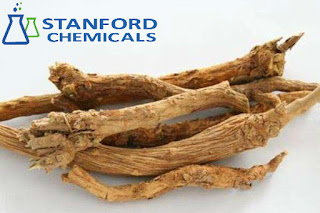The Neuroprotective Effect of Huperzine A
Besides the significant cholinesterase inhibition, Hup A also has extensive neuroprotective effects. Its protective effect also plays an important role in the treatment of AD and the damage of neurotoxic substances.
1 antagonism to organophosphorus neurotoxicity: organophosphorus compounds are a very toxic class of neurotoxic agents, which can irreversible the inhibition of acetylcholinesterase in the central and peripheral areas. The main mechanism of Hup A against organophosphorus poisoning is the reversible binding of Hup A to acetylcholinesterase in advance, thus preventing the irreversible binding of organophosphorus compounds from acetylcholinesterase. Compared with other used reversible cholinesterase inhibitors, such as bromide pyridine, Hup A has two advantages: on the one hand, Hup A can protect the brain acetylcholinesterase through the blood-brain barrier. Animal experiments show that Hup A can effectively protect the cerebral cortex cholinesterase from Souman inhibition and effective prevention of seizures. Under the condition of the low dose of Souman, Hup A alone can play a protective role without causing typical cholinergic side effects. On the other hand, butyrylcholinesterase and carboxylesterase may be endogenous organophosphorus scavengers, Hup A can selectively inhibit the plasma erythrocyte acetylcholinesterase, but has no inhibitory effect on butyrylcholinesterase, so the selectivity of Hup A is helpful to the prevention of organophosphorus poisoning. We can see that Hup A has great potential in the prevention of chemical weapons.
2 Antagonism to glutamate toxicity: glutamate is an activator of the NMDA receptor, the NMDA receptor is excited to increase the flow of calcium ions into the neuron, and the high concentration of calcium ions leads to cell death. Hup A can reduce the toxicity of glutamate to nerve cells and increase the cell survival rate, especially for the mature neuron cells, because the number of NM - DA receptors in the mature neuron cells is more. After the antagonistic glutamate mechanism may be excited by the NMDA receptor, Hup A blocks the downstream of the signal transduction pathway, thus preventing the cell death caused by glutamate. In addition, the protective effect of Hup A on nerve cells may also have the involvement of glutamate receptor-mediated involvement.
3 Antagonism to oxidative stress: oxidative stress is one of the factors contributing to AD, and is associated with neuronal entanglement and senile plaques. Senile plaques are caused by the deposition of P amyloid protein. Hup A protects neurons against the toxicity of P amyloid protein. In vitro cultured rat primary cortical cells were incubated under the conditions of A8 25 - 35 (P amyloid protein fragment twenty-fifth ~ 35 amino acid residues). Cell apoptosis could be observed, cell viability decreased significantly, neuron cell morphology changes and its DNA fragments. Early administration of Hup A can significantly improve cell viability and prevent nuclear fragmentation. The mechanism is Hup A by inhibiting the formation of reactive oxygen species (ROSreactive oxygen species) and the activity ratio of caspase 3 enzyme.
4 Ischemic and anoxic brain injury: studies have shown that transient ischemia can lead to delayed neuronal death in the brain regions, such as the body, hippocampus and cerebral cortex, and the death of neurons in the hippocampal CAl region after cerebral ischemia is closely related to the decline of learning and memory function. Hup A can improve the spatial memory impairment and neuropathological damage caused by transient global cerebral ischemia in adult gerbils. Hup A also has protective effects on cell damage induced by sugar deficiency, and its mechanism is related to the regulation of Bcl 2 family genes and early genes. Hup A has an inhibitory effect on neuronal apoptosis induced by serum-free culture. The mechanism is the caspase pathway that Hup A directly or indirectly inhibits mitochondrial dependence, indicating that Hup A has a potential therapeutic potential for vascular dementia (VD).
5 Inhibition of NO neurotoxicity: studies have shown that NO can inhibit the growth and induce cell apoptosis of SK - N - SH cells in human neuroblastoma. Hup A, ginkgolide A and B can block the apoptosis and growth inhibition of sodium nitroprusside (NO donor) on SK N SH system. In addition, Hup A and ginkgolide A and B also inhibited the production of NO in glial cells and NO production in human and rat astrocytes. These results suggest that the 3 compounds may enhance the memory function of AD patients by decreasing the level of NO and decreasing the neurotoxicity induced by NO.
For more information, please visit http://www.stanfordchem.com/





Comments
Post a Comment